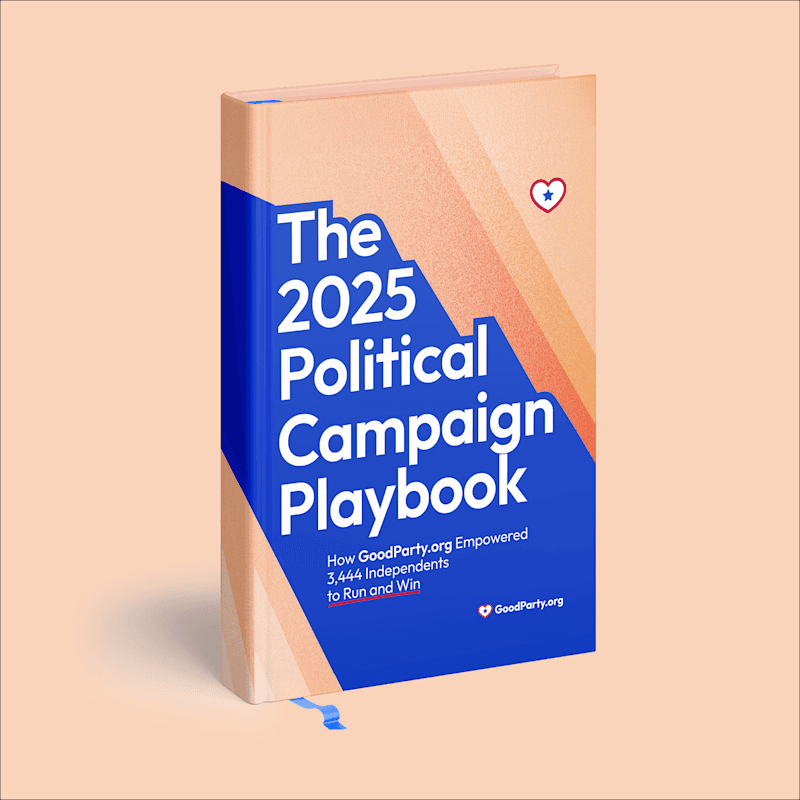
Pros and Cons of Two-Round Election Systems
A popular saying regarding two-round electoral systems is that the first round is when people vote with their hearts, while the second round is when people vote with their heads.
In this guide, we’ll explore what a two-round electoral system is, how it works, and what advantages and disadvantages this kind of electoral system brings to the table.
Understanding Two-Round Electoral Systems
Two-round elections have been seen perhaps most famously in France, but are used in over 80 nations around the world. This election system begins with a first round of voting and, if that round does not produce a winner with an absolute majority, a second round of voting allows voters to choose between the two highest-voted candidates.
Two-round electoral systems are known by several names other than TRS. They include:
Runoff voting
Second ballot
Ballotage
There are also variations in the way two-round voting is used in different countries and elections. To understand how two-round electoral systems work in more detail, it can be helpful to compare them to a similar but different electoral system which Americans are becoming increasingly familiar with: ranked choice voting.
Two-Round Electoral Systems vs. Ranked Choice Voting
Ranked choice voting (RCV) and two-round elections are both popular in North America, Europe, and around the globe. Ranked choice voting, also known as instant runoff voting, is less expensive for taxpayers because they do not have to pay the bill of two elections, as many taxpayers do in two-round systems. Voters using ranked choice voting only go to the ballot box once, though the tabulation of votes can go through multiple rounds until a clear winner is found.
According to reporting by Politico, when New York City switched from TRS to RCV, the city saved taxpayers $20 million each electoral cycle compared to when they used their former system. Ranked choice also maintains voter turnout better than two-round voting.
How Voters Participate in a Two-Round Electoral System
Voting is simple in a two-round voting system and permits a reasonable degree of voter empowerment. In the first round, each voter receives a ballot on which the available candidates await the voter’s indication of preference. If this first round does not produce an absolute majority of the total votes, then the two candidates who received the greatest number of votes will advance to the second ballot for voter choice. With only two choices in the second stage of runoff voting, barring the occurrence of a tie vote, one of the candidates will become the clear winner with an absolute majority. Citizens need not choose the same candidate each round, even if their preferred candidate from the first round advances to the second.
Counting the Results in Two-Round Systems
Different countries and areas allow different lengths of time to elapse between the first and second rounds of voting. Some countries allow two weeks to elapse, for example. This delay both draws out the period of uncertainty as citizens wait for the results of the election, and gives voters more time to think carefully about how they will vote in the second round of the election.
The Advantages of Two-Round Electoral Voting
The main pros of TRS include:
Flexibility between rounds of voting
Encouragement to cooperate across parties
Reduction in vote-splitting
Below, we’ll walk through each of these advantages more in depth:
Flexibility Between Rounds of Voting
Two-round voting does not require a voter to choose the same candidate twice, even if that candidate is on the ballot in both rounds of voting. Participants can change their minds for whatever reason.
Whether further analysis has caused them to reconsider their initial ideas or priorities, or some incident or information presented by the news has persuaded the voter to shift their choice, voters are free to vote as they choose when the second ballot comes around.
Encouragement to Work Together
Candidates and political parties may find cooperation more enticing in a two-round voting process. Diverse interests tend to converge and put their support behind the candidates proceeding to the second electoral round. This also makes that flexibility important, as the political landscape shifts and deals form or collapse. In a single round of voting, the push is to be the winner, not to compromise.
Decrease in Vote-Splitting
Vote-splitting is a common problem in electoral systems. Democratic nations have tried to overcome this issue in different ways.
When two or more candidates’ platforms are too similar to one another, the phenomenon of splitting votes emerges: each candidate receives fewer votes and an increased chance of loss, permitting a less popular party or candidate to seize the victory despite lacking a majority of voters who desire their leadership.
In a two-round electoral system, this problem is reduced, because divergent parties can come together in the second round of voting to elect the most overall-popular candidate. In this way, two-round systems show greater respect for voter preferences.
Disadvantages of a Two-Round System of Elections
While two-round election systems come with important advantages, runoff voting is not the correct solution for every situation. The cons include:
Increased burden and cost for voting administrations
Problems with civic engagement when the time comes to vote again
Dangers for deeply divided nations experiencing instability
Similar problems to first-past-the-post (FPTP) electoral systems
Let’s explore each of the disadvantages in depth:
Increased Pressure on Voting Administrations and Taxpayers
Tax revenue and manpower both go into the administration of elections. Having two rounds of voting reasonably doubles these burdens. Critics argue that all of the money and energy poured into a second round of voting could easily be used elsewhere.
Issues with Civic Engagement During the Second Round of Voting
Some nations experience problems with civic engagement when voters choose not to participate in the very voting mechanisms that are meant to create voter empowerment. When people lose faith in their political and election systems, whether they favor runoff voting or not, motivating them to vote is difficult. Motivating voters to vote twice in a row can prove even more challenging.
Dangers for Societies with Deep Divides
The time between the two rounds of voting can prove a danger to nations with uncertain political climates and political violence waiting in the wings. For example, a candidate could see that the first round of voting will not result in their victory, leaving room to rouse unrest and attempt a coup, subverting the election processes and the power of voter choice.
Shared Problems with First-Past-the-Post Electoral Systems
Of all the electoral systems available, American voters should be most familiar with first-past-the-post voting. This system allows the candidate with the highest percentage of votes to win the election, whether or not they have achieved an absolute majority.
FPTP systems often produce disproportional results that can be seen among Western democracies. This same disadvantage carries over to two-round electoral systems. In fact, France, which utilizes two-round voting, serves as an extreme example.
Stand Up for Electoral Reform
What kind of electoral system is used in your community? Whether you’re used to voting in runoff, first-past-the-post, ranked choice elections, or another form of electoral system, there is always room for improvement and electoral reform.
Want to learn more about how you can get involved in the democracy reform movement? Join GoodParty.org’s growing community of independent thinkers and reform-minded changemakers.

